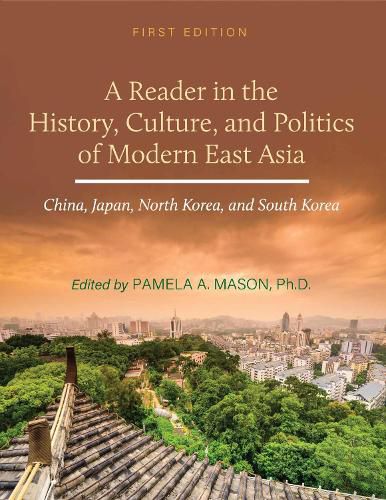Readings Newsletter
Become a Readings Member to make your shopping experience even easier.
Sign in or sign up for free!
You’re not far away from qualifying for FREE standard shipping within Australia
You’ve qualified for FREE standard shipping within Australia
The cart is loading…






This title is printed to order. This book may have been self-published. If so, we cannot guarantee the quality of the content. In the main most books will have gone through the editing process however some may not. We therefore suggest that you be aware of this before ordering this book. If in doubt check either the author or publisher’s details as we are unable to accept any returns unless they are faulty. Please contact us if you have any questions.
A Reader in the History, Culture, and Politics of Modern East Asia presents readings that encourage students to explore issues related to modernization, nationalism, the state, and national identity in China, Japan, and Korea.
The reader’s Introduction examines the Washington Consensus and its competitors, and the 21st century shift in global economic power from the Anglo-American West to China. Each of the three parts that follow is focused on a particular country.
Part I explores the Chinese concept of tianxia through interpretation of the hit 2002 movie, Hero; China’s household registration (hukou) system and its impacts upon migrant children in Chinese cities; and continuity and change in East Asian patterns of marriage and family. Part II examines aspects of Japanese modernization, nationalism, and state-building from the Meiji era to the present; contemporary challenges at the national level; and the vitality of local politics in this unitary state. Part III considers Korea’s and China’s movement from tribute to treaty relations in the 19th century; the development of Korean national identity through sport from the colonial era to 1988; changing South Korean perceptions of North Korean immigrants; and competing models of North Korea as a state. The Conclusion offers a diplomat’s overview of the politics of history in East Asia. Students are then provided with a Glossary of terms and concepts.
A Reader in the History, Culture, and Politics of Modern East Asia is an excellent resource for undergraduate courses in political science and Asian studies.
$9.00 standard shipping within Australia
FREE standard shipping within Australia for orders over $100.00
Express & International shipping calculated at checkout
This title is printed to order. This book may have been self-published. If so, we cannot guarantee the quality of the content. In the main most books will have gone through the editing process however some may not. We therefore suggest that you be aware of this before ordering this book. If in doubt check either the author or publisher’s details as we are unable to accept any returns unless they are faulty. Please contact us if you have any questions.
A Reader in the History, Culture, and Politics of Modern East Asia presents readings that encourage students to explore issues related to modernization, nationalism, the state, and national identity in China, Japan, and Korea.
The reader’s Introduction examines the Washington Consensus and its competitors, and the 21st century shift in global economic power from the Anglo-American West to China. Each of the three parts that follow is focused on a particular country.
Part I explores the Chinese concept of tianxia through interpretation of the hit 2002 movie, Hero; China’s household registration (hukou) system and its impacts upon migrant children in Chinese cities; and continuity and change in East Asian patterns of marriage and family. Part II examines aspects of Japanese modernization, nationalism, and state-building from the Meiji era to the present; contemporary challenges at the national level; and the vitality of local politics in this unitary state. Part III considers Korea’s and China’s movement from tribute to treaty relations in the 19th century; the development of Korean national identity through sport from the colonial era to 1988; changing South Korean perceptions of North Korean immigrants; and competing models of North Korea as a state. The Conclusion offers a diplomat’s overview of the politics of history in East Asia. Students are then provided with a Glossary of terms and concepts.
A Reader in the History, Culture, and Politics of Modern East Asia is an excellent resource for undergraduate courses in political science and Asian studies.